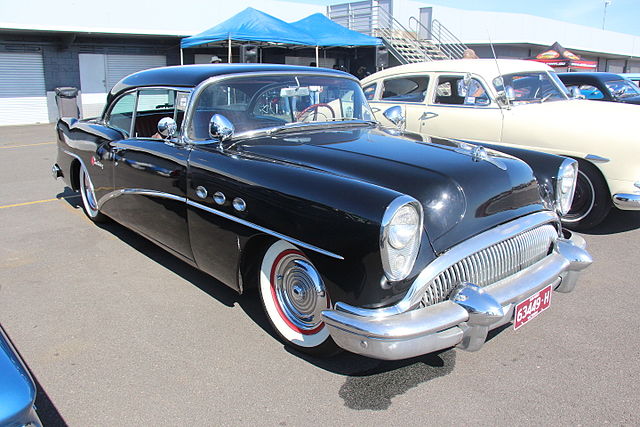How hardtops were in fashion in the 1950s and ’60s
Posted by Dale Edward Johnson on Jan 19th 2022
From the late 1940s to the late 1970s hardtops were the most desirable body style for cars.
The idea of a hardtop was to have no central pillars to support the roof, so they looked much like a convertible with the roof in the up or closed position. Hardtops certainly were more eye-pleasing than sedans, which had posts behind the front doors. The concept of the hardtop was to combine the beauty of a convertible with the practicality of a closed car. There’s a reason convertibles have the nickname “ragtops.” No one has to replace the roof of a hardtop due to typical wear and tear, while getting a new roof for a convertible is considered part of the normal maintenance (or restoration) of an open-air model.
While convertibles attracted lots of the attention, hardtops were far more practical and less expensive than convertibles. While convertibles may have looked like fun in the movies, a hardtop delivered much the same look – and could actually be in your own driveway.
Although there had been a handful of vehicles with no center side posts in the early days of the auto industry, the idea didn’t really catch on until late in the 1949 model year, when three General Motors lines each introduced their own “hardtop convertible” models – so named because they looked much like convertibles with the roof up. Cadillac introduced the Coupe deVille, Buick brought out the Roadmaster Rivera and Oldsmobile offered the 98 Holiday. These trend-setters were high-end cars with prices close to their convertible counterparts.
The idea is thought to have originate with the wife of a GM executive who liked the open feel of a convertible, but always drove with the top up so her hair would not be messed up by the wind.
For 1950, the lesser GM lines, introduced hardtops: the Pontiac Catalina and Chevrolet Bel Air. As well, some competitors – Chrysler, DeSoto and Dodge – also introduced hardtops.
The following year Ford, Hudson, Nash, Packard and Plymouth got into the hardtop game. Late to the game were Mercury, Lincoln and Studebaker, offering their first hardtops in 1952.
GM introduced four-door hardtops in 1955 in the Oldsmobile line, providing the style of hardtops with the practicality of rear doors for families. Other GM lines and competitors soon also offered four-door hardtops. There were soon four-door hardtop station wagons, – including the Buick Cabellero, Oldsmobile Fiesta, Mercury Colony Park and Rambler Cross Country – yet another example of combining style with practicality.
By 1957 about one-third of all new passenger cars were hardtops.
Throughout the 1950s and 1960s, two-door sedans fell in popularity, while two-door hardtops surpassed four-door sedans in sales.

As hardtops became even more popular in the 1960s, some models were offered only as hardtops (and convertibles), including pony cars like the Ford Mustang and Mercury Cougar. The luxury Oldsmobile Toronado was offered only as a two-door hardtop.
But during the 1970s, there were concerns raised about shortcomings of hardtops. They provided less protection to occupants in the case of roll-over accidents, because posts in sedans and coupes provided added strength that wasn’t offered in hardtops. As well, as hardtops got older some of them were not as quiet or as waterproof as sedans, because there was less support for the windows.
That was the start of the fading of the true hardtop body style. In the 1970s, styles changed, and hardtops became less popular. Cars with rear side windows that rolled down were largely eliminated, replaced by thick roofs with stationary glass. The last true hardtops were offered by Chrysler in 1978.
While hardtops are yet another styling feature that has faded from new cars, hardtop buffs still have lots of choices when they go shopping for a car from the 1950s or ’60s – when automakers offered almost all models as hardtops. Collectors these days often first look for hardtops when they go shopping for a classic car. One thing that hasn’t changed since the first modern hardtops were introduced by GM in 1949 is that they look better than their sedan cousins, while offering more practicality than convertibles.
